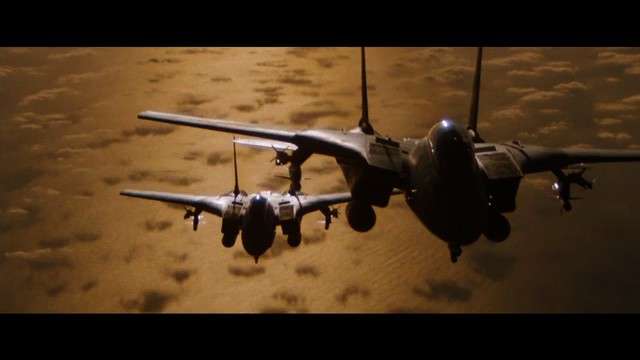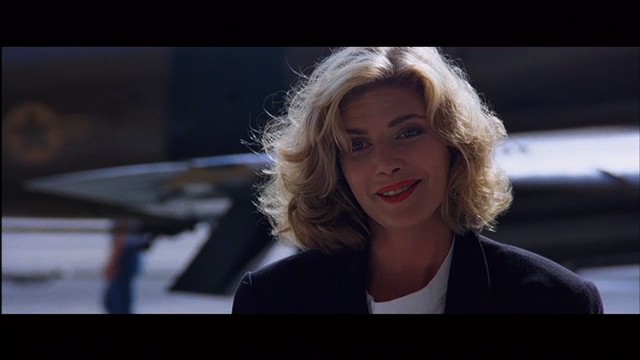Before sadly passing away in 2012, Top Gun director Tony Scott oversaw the stereo conversion of his defining 1986 film, about to be released in IMAX 3D and on Blu-ray/DVD. We talk to Legend3D founder, chief creative officer and chief technology officer Dr. Barry Sandrew about the art behind the conversion. And we also revisit the ingenious miniature and in-camera effects of the film with special photographic effects supervisor Gary Gutierrez.
Converting Top Gun
Preparing the film
Top Gun had been shot on Super 35mm film, so the first requirement was to scan the original negative. Digital mastering expert Garrett J. Smith acted as a liaison to Legend3D during the scanning process. “In his opinion,” says Sandrew, “the film had been properly handled over the years and because it was shot Super 35, there was less wear and tear on the negative than others from that era.”
The negative was scanned by EFILM, who oversampled at 6K using ARRI scanners in High Dynamic Range mode, then recorded at 4K by Company3 who extracted as 2K files. “Company3 then trimmed the files nondestructively in preparation for Legend3D’s restoration and conversion that was performed with a working LUT provided by Company3,” says Sandrew.
Creating a depth script
The Legend team then crafted a ‘depth script’ for the film which, as Sandrew explains, was designed to follow the pulse of the story much like a music score. “Most people rarely notice the music score in a movie but when executed well, we are very much influenced by it,” he says. “Our goal is the same in stereo conversion. We want to avoid creating a situation where 3D becomes the story. In fact, the audience should be able to lose themselves in the film, forgetting that they are watching a 3D movie. However, we do want to use conversion to immerse the audience and enhance their emotional and visceral reaction to the storyline.”
Scenes with Charlie (Kelly McGillis) and other actors were not necessarily easy to convert, owing to flyaway hairs and long tracking shots.
The depth script was far from conservative, with Legend’s conversion team – led by Tony Baldridge, stereo VFX supervisor, Cyrus Gladstone, stereographer and Adam Gering, compositing supervisor – ‘exploiting’ the new scan so that audiences would ultimately feel like they were experiencing Top Gun for the first time. “[Tony] loved the flight scenes and wanted the intensity of those moments to resonate with audience’s adrenaline,” says Sandrew. “He felt that they had to be immersed in the action. We had the freedom to set the convergence throughout the film, which allowed us to break the boundaries set by filming in 3D. Cyrus correctly pointed out that placing the jets off screen would not be distracting to the viewer if there was sufficient fluidity from shot to shot. Sometimes we would ‘Multi-Rig’ the convergence between shots to not distract from the story.

